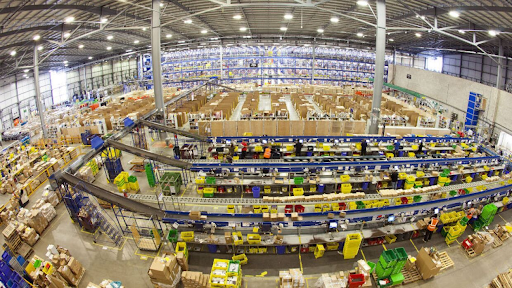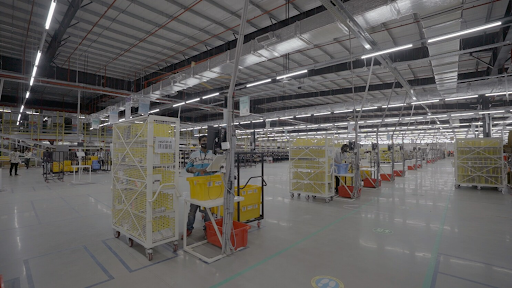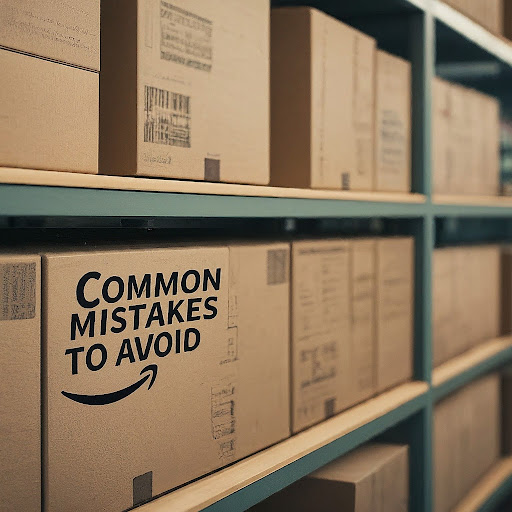Navigating Amazon FC Transfers | Detailed Guide for Sellers
As an Amazon seller, leveraging FBA offers you access to a vast fulfillment network. However, this can sometimes lead to your inventory being moved between fulfillment centers, known as FC transfers. While these transfers are part of Amazon's strategy to optimize delivery times and meet customer demands, they can pose challenges if not managed properly.
In this guide, we'll unveil unique aspects of FC transfers and provide actionable tips to help you navigate the process seamlessly.
Understanding Amazon Fulfillment Centers (FCs)

Amazon operates over 185 (100 in the US) fulfillment centers globally, handling everything from receiving your products to shipping them to customers. Key features of Amazon FCs include:
-
Specialization: Each FC often specializes in specific product categories.
-
Advanced Automation: Use of robotics and technology to optimize operations.
-
Strategic Placement: Distribution of inventory across multiple FCs to meet regional demand.
What Are FC Transfers?
An FC transfer occurs when Amazon moves your inventory from one fulfillment center to another. The primary reasons for FC transfers are:
-
Proximity to Customers: Placing products closer to high-demand areas to ensure faster delivery.
-
Optimizing Warehouse Capacity: Balancing inventory across FCs to prevent overcrowding and bottlenecks.
FC Transfer vs. FC Processing
-
FC Processing: Internal operations when your inventory arrives at an FC, including receiving and preparing items for sale.
-
FC Transfer: Physical movement of inventory between FCs, during which products are temporarily unavailable for immediate purchase by Prime members.
Impact of FC Transfers on Your Business

Understanding how FC transfers affect your business is crucial:
-
Buy Box Eligibility: Products in transfer may lose Prime eligibility, affecting your Buy Box chances.
-
Inventory Shortages: Potential stockouts due to unavailable inventory during transfers.
-
Increased Storage Fees: Longer storage times if inventory isn't managed properly.
-
Delayed Cash Flow: Fewer sales can slow down your revenue stream.
How to Navigate FC Transfers Successfully
1. Monitor Your Inventory Reports
Regularly check the Reserved Inventory Report to track units in transfer or processing. This helps you anticipate potential stockouts.
2. Maintain Adequate Safety Stock
Keep extra units to buffer against inventory gaps. Calculate safety stock by multiplying your average daily sales by the lead time of transfers.
3. Avoid Overstocking
While it's important to prevent stockouts, overstocking can lead to increased storage fees. Use data analytics to make informed inventory decisions.
4. Keep Listings Active
Even during transfers, list your products as available with adjusted delivery estimates to continue generating sales.
5. Utilize FBA Inventory Tools
-
FBA Inbound Placement Service: Optimize where your inventory is stored.
-
Restock Notifications: Set target FCs for new shipments.
-
Inventory Health Reports: Monitor and act on underperforming inventory.
6. File Reimbursement Claims for Discrepancies
Use services like GETIDA to audit your account for inventory discrepancies and claim reimbursements for lost or damaged items.
7. Stay Updated on Policy Changes
Amazon's policies can change, impacting FC transfers and storage fees. Regularly review updates to adapt your strategies accordingly.
8. Follow Up on Delays
If transfers exceed typical time frames (usually 22-25 days), contact Amazon Seller Support with shipment IDs to inquire about delays.
Common Mistakes to Avoid

-
Ignoring Inventory Reports: Failing to monitor can lead to unexpected stockouts.
-
Overcompensating with Inventory: Sending too much stock increases costs.
-
Neglecting Reimbursements: Not claiming for lost or damaged goods means lost revenue.
-
Not Adjusting to Policy Changes: Being unaware can lead to non-compliance and penalties.
Conclusion
FC transfers are an integral part of Amazon's fulfillment strategy, aimed at enhancing customer satisfaction through faster delivery times. By understanding and proactively managing these transfers, you can minimize disruptions to your business, maintain your Buy Box eligibility, and ensure a steady cash flow.
If you need personalized guidance or help fine-tuning your strategies, Superfuel AI can assist. Our AI-powered assistant analyzes 36+ key Amazon metrics to identify and address the root causes of sales fluctuations, helping you optimize your storefront and boost sales. Reach out to us at [email protected].
--
Ben Mathew, Amazon Expert
Ben Mathew is a co-founder at Superfuel, a sales assistant for Amazon sellers. In the past, Ben and his team of e-commerce specialists and software engineers have launched 40+ new brands on Amazon, taking them from zero to bestsellers. In his free time, he is either learning from other top sellers or encouraging his 3 daughters in their love for reading. He is reachable at ben [at] superfuel.io.
FAQs
What is an FC transfer on Amazon?
An FC transfer is when Amazon moves your inventory from one fulfillment center to another to optimize storage and meet customer demand.
How long does an FC transfer take?
Transfers typically take between 22 to 25 days but can vary due to factors like distance and logistical challenges.
Can I control FC transfers as a seller?
No, sellers cannot directly control FC transfers. Amazon manages this process based on their logistics strategies.
How can I track my inventory during an FC transfer?
Use the Reserved Inventory Report in Seller Central to monitor units in FC transfer or processing.
What should I do if my inventory is stuck in transfer?
If a transfer exceeds the typical time frame, contact Amazon Seller Support with your shipment IDs to investigate.